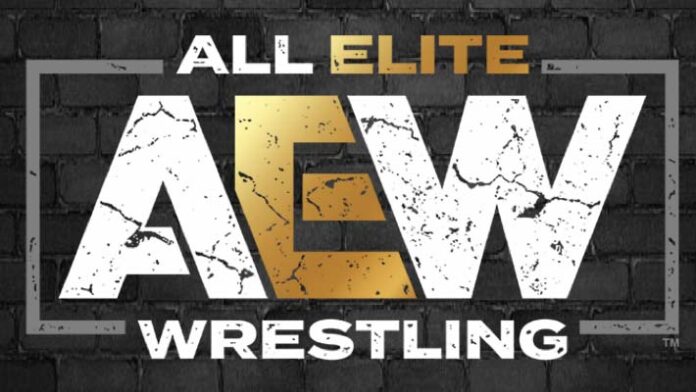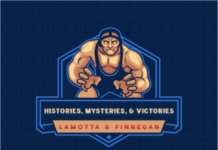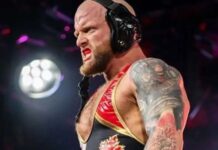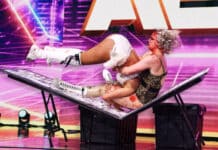
With as much wrestling content that is among the current wrestling landscape, I often have to prioritize the events that I’m going to cover in this column before any leisure viewing takes place. Quite simply, there’s usually so many happenings and often not enough time to realistically get to them all, particularly when real life can keep you as busy as it does.
My usual podcast line-up is rather simple and usually listened to while I’m doing laundry or attempting my best Rocky training montage impression on the treadmill. As we know from some of the subpar ratings of secondary wrestling shows, there are only so many hours in the day, and only so much time even diehard fans are going to commit to their pro wrestling schedules. Still, as mentioned, I keep my podcast routine rather simple, with different clips sprinkled in throughout any given week. That’s not to say there aren’t a lot of great options and entertaining content available, because there definitely are many great episodes, but to attempt to stay current with all of them is unrealistic.
The Kliq This podcast with Kevin Nash and Sean Oliver, who more or less revolutionized the shoot interview market that evolved into podcasts through his Kayfabe Commentaries production group, is one of the very few audio shows that I listen to in its entirety every week. Oliver is a great tour guide for Nash, with a very clear Howard Stern influence in terms of the pacing of the shows, and the Kayfabe Commentaries front man acknowledges his Stern fandom so the nod to the shock jock’s hosting style isn’t surprising. Nash, who seems like the coolest dude in wrestling, actually is the coolest guy in the room. He’s smart and he knows it, but he’s down to earth at the same time. I absolutely believe that he was a career politician during his wrestling heyday, but he has a much more mellow reflection in hindsight. I actually met Nash twice and he was a great guy so maybe that authenticity or at least the perception of it allows for an easier viewing experience on Youtube. Nash and Oliver sound like two buddies shooting the breeze, not two wrestling guys looking for headlines.
The other podcast regularly on my schedule is the weekly show that The Wrestling Observer’s Bryan Alvarez co-hosts with the underrated legend, Lance Storm. Despite being one of the faces of the “dirt sheets.” Alvarez has a much more measured approach than Dave Meltzer, in my opinion. In fact, while I don’t necessarily agree with everything Alvarez says, he often makes very good points and has the broadcasting ability that Meltzer, quite frankly, just doesn’t have, which isn’t meant as a knock, but rather to point out Bryan’s importance to the Observer. Lance Storm is one of the brightest minds of the industry and the insight he provides is extremely valuable.
Outside of that, I will listen to various clips from others that get to the point since the full episodes are usually just too long to find the time to listen to completely. For example, for all of his critics, Jim Cornette makes some extremely valid points and it’d be useful for those in the industry to take them into consideration. That said, as much as I enjoy listening to the Louisville Slugger rant and rave about sports entertainment and fast food, there’s absolutely no way I could listen to a four-hour episode of The Jim Cornette experience. As a general rule, if a podcast is longer than a traditional pay-per-view, I’m not even going to attempt to listen to the entire show.
However, as I was folding towels over the weekend, the “related videos” column that caused countless people to wander down the Youtube rabbit hole only to emerge a few hours later wondering where the past four hours went, I saw the suggestion of Foley is Pod, the hardcore legend’s audio show that he does with Conrad Thompson. The UWF edition that was put online just three months ago that chronicled the wild and disastrous tenure of Herb Abrams, who died in 1996 after a cocaine-fuel heart attack following an encounter with two escorts, was one that got selected. Underneath that was Foley’s Youtube reflection on The infamous King of the Deathmatch tournament that was originally posted late last year so I added that to the list. And yes, it occurred to me that an eccentric promoter that died after chasing hookers around an office building with a baseball bat, and a fledgling wrestler that suffered second degree burns for a $300 payoff are stories that can only happen in pro wrestling.
As I cracked open another energy drink earlier to get some work done, I saw “Mick wins the TNA title” as a suggestion when I got to the Youtube page with nothing in particular lined up to listen to except for a non-wrestling travel podcast to provide some contrast to the in-ring mayhem I usually hear about on the streaming site. I clicked on the TNA championship episode, mostly because I actually attended the event at the time, and wrote in-depth about the journey that included chicken and cage matches in early-2021.
As you’d expect, Conrad and Mick began the show will the general discussion about where TNA was in 2009. and Mick explained that despite more mainstream stars on the roster, Total Nonstop Action never received the type of recognition from the fans that All Elite Wrestling has today. In fact, Mick and Conrad commented that TNA’s ratings in April on 2009, which was when the Lockdown main event of Mick vs. Sting for the TNA championship took place, were higher than anything AEW has done in its existence. Granted, the industry and the climate of television has changed drastically in the past 15 years, but how did TNA miss the mark with such a loaded line-up?
Pondering that question is what prompted me to write this article. Don’t get me wrong, there were many mistakes that took TNA off of a cliff and are too numerous to cover within one column, but even before Dixie Carter’s terrible business decision, why didn’t fans embrace TNA the way they rallied behind AEW?
Again, make no mistake, All Elite Wrestling isn’t perfect, and it remains to be seen if the mistakes that Tony Khan made will put a ceiling on the progress his organization can make, but there’s no doubt that AEW has a dedicated fan base that just wasn’t there for Total Nonstop Action. That should be a stark warning to Tony Khan that the right decisions have to be made because the organic and spontaneous events that allowed for the launch of AEW provide a very rare opportunity in the industry.
Most importantly, the implied mission statement of each promotion was a major factor into how the audience viewed the status of each promotion. TNA, fairly or unfairly, and there might’ve been some validity to this criticism at times, appeared to be a project that was put together so that Jeff Jarrett could be the top guy of his own organization. The indication was that the existence of TNA was to serve Double J’s ego, not the wrestling fans. Obviously, that perception has softened over the years, but at the time, many fans shook their heads when Jarrett was often the centerpiece of his own company. The other side of the coin is that Jarrett, who made big money in the WWF and WCW for the majority of his career, put a lot of his own cash on the line to start TNA so it makes sense that he’d trust himself to shoulder much of the company in the ring when his personal finances were on the line.
Let’s keep in mind the origin of All Elite Wrestling and the premise that brought it to a reality. Tony Khan saw the success of All In, the independent event that was held by Cody Rhodes and The Young Bucks. It was very much a team effort between the athletes and the fans to prove that there was a demand for an alternative to the corporate machine of WWE. Remember in 2002, when TNA began, there was a question of what the next alternative would be, not necessarily an overwhelming demand for it yet because the WWE still had the bulk of the roster that was in the company during the surge of the Attitude era a few years earlier. While there was discontent with the direction the company, The Rock, Steve Austin, The Undertaker, and Kurt Angle were all still major players in mid-2002. As infamous as he was in the time since, Hulk Hogan’s original return to the company that year was a major draw since he left the organization almost a decade earlier.
Fast forward to 2019 and the industry was in a much different place. TNA almost collapsed and had to be rescued by Anthem entertainment to become a product more or less tailored to the Canadian market, but hadn’t really been a force in the industry since it was canceled from Spike TV in 2014. Fans saw their choice as the top star, Daniel Bryan ignored by the WWE office and then injuries put him on the sidelines for a few years. Roman Reigns is doing the best work of his career now, but let’s not forget that it took management several years to realize that the forced baby face push wasn’t going to work before they finally turned him heel.
The launch of All Elite Wrestling had the mission statement that the company wanted to revolutionize the business, and it was the chance to improve the stagnant industry that rallied fans behind the venture. The audience saw their choices ignored for what the WWE wanted to present as their corporate agenda. The fans knew that Tony Khan is from a billionaire family and didn’t need to invest into pro wrestling to make money. There are some negatives to this, but the fans knew that Tony Khan was as passionate about the sport as they were, and that level of good will with the audience is ultimately what allowed fans to want to spend money on the product.
Revenue and profit are ultimately the ways to measure success.
Sure, it was cheaper for TNA to run free tapings in the Impact Zone, but when the audience there wasn’t actually spending money, they were no way to gauge on how the product really connected with the audience. The fact that taking the show on the road during the Hogan era didn’t draw well at all speaks to the lack of enthusiasm (and advertising) of the product. The dismissal house show numbers proved that jamming 700 fans into the Impact Zone for free shows didn’t mean that the fans wanted to see an event without all the top names in different venues. Clearly, the numbers during 2009 that Mick talked about during the podcast indicated that fans were willing to watch TNA at one point, but I don’t think the Nashville-based organization truly developed a connection with it fan base that made fans want to spend money on the product, outside of the occasional pay-per-view.
The goodwill that Tony Khan has with the AEW fans is based on the concept that it supports of not only their favorite wrestlers, but also the ability to spark the wrestling industry. It can’t be understated how valuable that is, and how a few key mistakes could see it drastically decline. The Elite mocking CM Punk right after their return to television wasn’t a smart move when Tony Khan will now have to promote Punk as the center piece of a new TV show to that same audience.
The biggest takeaway from the gems of knowledge that Mick mentioned is that the opportunity to garner the level of fan support to get a company off the ground is rare. The millions of dollars that Panda energy invested into TNA was moot since the company had to be sold to cover its debts. The opportunity cost associated with TNA was that stellar athletes like Samoa Joe, AJ Styles, Abyss, and others spent the majority of the prime of their career under the banner. If ECW could’ve stayed open another year, what could Paul Heyman have done with the stars of the X-Division? As this month is a major platform for AEW with the debut of Collision and The Forbidden Door pay-per-view, Tony Khan should make sure that the correct business decisions are made because the fact that more fans are willing to spend money on AEW now than anyone did on the TNA product throughout its entire existence provides a rare opportunity for All Elite to continue to expand, which would benefit the industry.
What do you think? Share your thoughts, opinions, feedback, and anything else that was raised on Twitter @PWMania and Facebook.com/PWMania.
Until next week
-Jim LaMotta
E mail [email protected] | You can follow me on Instagram & Facebook @jimlamotta89






